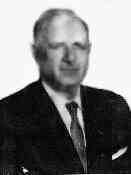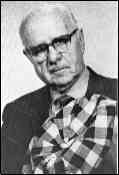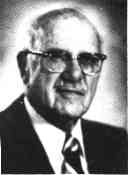


1895-1995 |
 |
 |
 |
||
| Glenn E. Messer, 1962. | Glenn E. Messer, 1971. | Glenn E. Messer, 1993. |
|
You will find the story of the meeting by clicking on: Glenn Messer |
|
Pioneer Mid-West Aviator By Harold E. Morehouse Glenn E. Messer was born in Henry County, Iowa, July 12, 1895, son of a farmer, General Contractor, Hardware and Farm Implement Dealer. He attended local grade and high schools, then was induced to enter Medical School at the University of Iowa by their elderly family doctor who agreed to pay his college expenses, with the hope that young Messer would follow in his footsteps upon graduation. He became dissatisfied with this obligatory arrangement and wanted to change to Engineering. However, this would necessitate paying his own way. About this time Messer met aviator George Gustafson of Bay City, Michigan, who owned a Wright Biplane and was flying exhibitions and instructing students on occasion. As a result, he left Medical School after his second year and went to Bay City where he obtained four hours of flying instruction from Gustafson on the Wright Biplane. Messer had also been doing some dirt track automobile racing for Alex Sloan, so after taking flying lessons he persuaded Sloan to obtain a Wright Biplane for exhibition work. Messer made his first solo flight and public exhibition at Streator, Illinois on may 13th, 1911. That Fall he started Engineering School at the University of Illinois, continuing to do some flying by taking the train to his engagements, then back to school. In this way, he financed and completed his engineering education. In 1912 Messer bought a Curtiss-type biplane at a Sheriff Sale in Kansas City, Missouri, powered by a Kemp engine. With this plane he flew some exhibition dates that year, but had considerable engine trouble, so he installed a Gnome rotary engine. He did some exhibition flying through 1912-1915 and during that period installed a Curtiss OX-2 engine. Out of college in 1916, Messer joined the Royal Flying Corps and served there until 1917 when he accepted a commission in the Aviation Section, Signal Corps and served as an ;instructor at Camp Kelly, Texas, along with Edward Stinson and several other early pilots. Soon Messer was transferred to the Royal Flying Corps mission to the United States to install the Gosport system of instruction at the various flight training fields, where he remained until the summer of 1919. He then returned to Kelly Field until he was discharged from the Service later that year. Messer was then assigned to make one of the newly inagurated air mail flights from Potomac Park, Washington, D.C. to Belmont Park, Long Island, New york, flying a Curtiss R-4 mail plane. He and Edward Stinson formed a partnership to operate a new flying field at Birmingham, Alabama. Leaving Stinson to manage the field, Messer soon formed the Messer Flying Circus to engage in more advanced exhibition stunt work consisting of acrobatic flying, wing walking, parachuting and similar feats. Phoebe Fairgraves soon became an active partner and the name was changed to the Messer-Fairgraves Flying Circus. Messer soon developed an all-new phase of Post World War I aerial exhibitions and was reportedly the first man to change from one plane to another and to change from an automobile to an airplane. parachute jumping was added and Messer remained in this hazardous exhibition work until 1924 without personal injury. These outstanding stunts naturally led to movie work in which he also engaged for some time. "In the spring of 1923, I was doing some business in Americus, GA at Southern Field dealing in Army Aviation surplus materials. Charles A. Lindbergh came in there on a motorcycle wanting to get an airplane. He secured one of the three Jennys I had traded to Solomon & Wische Aircraft Co. and asked for help to get it rigged and ready for flying. Since we were not too busy, I let my mechanic help him get it rigged and when it was ready for flying, he asked me to check it out for him, which I did. Then he asked me to check him out in the plane and I gave him four hours dual time before I would turn him loose in the plane. He left me under the impression that he had already soloed in a J-1 Standard at Lincoln, Nebraska. Page Aircraft later tyold me he was given about four hours there but he had not soloed there. He later confirmed this to me personally and also in one of his books. The airplane he purchased had a Feders Radiator on it which would not cool the OX5 Engine and so, hot water was intermittently coming back in the pilot's face. I sold him two extra propellers, which he tied one on either side of the fuselage and I gave him a note to Major Weaver, Commandant at Maxwell Field, asking him to change the Fedders for a Rome-Turney for him. Sgt. Walter Wyse and Cpl. Jim Foster actually made the change for him at Maxwell. His next landing was North of Meridina, Miss., where I was told he landed and went over on his back, breaking a propeller and doing some damage to the tail which he repaired and proceeded on his way. I saw him occasionally after that at various places throughout the United States. Messer continued operations at the Birmingham airport and continued his Aerial Circus and movie work until 1924. later he built and managed the Messer Field, Birmingham. |
 |
|
In 1927, he organized the Southern Aircraft Corporation and designed and put into production a plane
known as the "Air Boss." This plane was eminently successful and did well in many air race events of that era. Later that year his firm
also started work on a controllable propeller which was the invention of his factory superintendent. This development turned out
successfully and was later taken over by one of the large propeller manufacturers. After maintaining business interests at the Birmingham Municipal Airport for many years, Messer later disposed of his holdings there and became associated with an aerial mapping concern as Chief Pilot and engaged in this business for many years. He was still active in this profession on a small scale, known as the Glenn E. Messer Company of Birmingham, which also operates a Certified Flying Instrument Service and carries a complete line of aircraft supplies. Messer held F.A.A. Commercial Pilot License No. 142 and Mechanics License 2C-145. He is a founder member of the Early Birds and has always been active in that distinguished organization. Glenn Messer passed away Tuesday A.M. June 13, 1995 in Birmingham, leaving his wife Tommie, and a daughter, Sarah L. Baker surviving. July, 1995, Number 96 |
|
Contributed by Harold Wright, 1-18-12 I saw your link on bottom of an article about Glenn Messer (Early Bird?). I was in Birmingham Aero Club in 1964/65 and met Glenn a few times. Club members with planes would sometimes fly to interesting spots on weekend. I recall one trip to Panama City Fl. All the club planes departed about the same time but Glenn beat all the others to P.C. Later I heard one of the pilots pose this question to Glenn. "You fly a Cessna 180 and we are flying retractable gear faster planes, so how do you always beat us to destination"? Glenn replied--"did you fellows ever fly a straight line--pilotage/dead reckoning"? A very interesting aviator indeed. The last time I visited with him was at SMF after he became blind. regards Harold Wright |
|
From The Early Birds of Aviation Roster of Members January 1, 1996 If you have any more information on this Early Bird, please contact me. E-mail to Ralph Cooper Back 

|